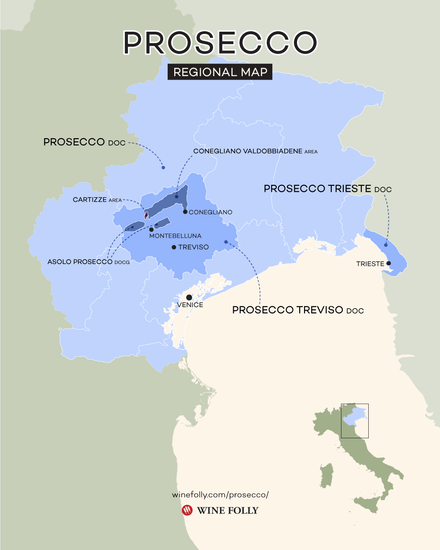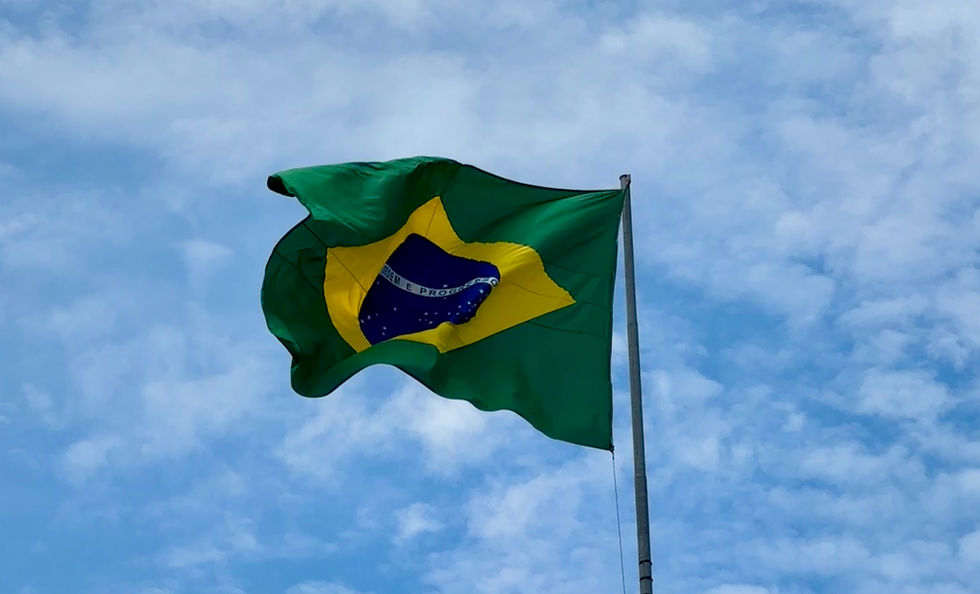
The Rise of Prosecco: Bubbles of Fame
- Nelly Ward

- Aug 13, 2024
- 2 min read
Love it or hate it, but everyone knows these bubbles. Prosecco has transformed from a regional Italian wine to a global phenomenon, quickly becoming the go-to bubbly for celebrations and casual sips alike.

Originating from the Veneto and Friuli Venezia Giulia regions in Italy, Prosecco's history dates back centuries. Its name comes from the village of Prosecco, near Trieste, where the grape Glera was first cultivated. However, it wasn't until the late 20th century that Prosecco began to gain traction. The Prosecco DOC (Denominazione di Origine Controllata) was established earlier, in 1969. This classification aimed to protect the quality and origin of Prosecco wines, ensuring that they met specific production standards. The DOC designation laid the groundwork for the later creation of the DOCG in 2009, which further refined the quality criteria and focused on the premium production areas of Conegliano Valdobbiadene and Asolo.

In the early 2000s, the wine industry saw a shift in consumer preferences from expensive Champagne to more affordable sparkling wines. Prosecco, with its light, fruity character and lower price point, filled this gap perfectly. The marketing of Prosecco played a crucial role in its rise. Brands like La Marca and Mionetto cleverly positioned Prosecco as a lifestyle choice, associating it with celebrations, social gatherings, and casual brunches. The chic packaging and vibrant branding made it appealing to younger consumers, particularly millennials who sought a more approachable sparkling option.


Prosecco's popularity soared with its frequent appearances in pop culture. From appearances in hit TV shows like “Sex and the City” to mentions in social media posts by influencers, the bubbly became synonymous with fun and celebration. The “Aperitivo” trend—enjoying drinks and light snacks before dinner—further cemented Prosecco’s role in modern social culture. And don't we all love Aperol or Campari Spritz?!
So how is Prosecco different from the traditional method sparkling wines (eg. Champagne)? Prosecco is crafted using the charming Charmat method, also known as the tank method. It all starts with the Glera grape, which is gently pressed to extract its juice and undergoes a primary fermentation in stainless steel tanks for about 15 to 20 days. Instead of bottling the base wine right away (as happens with Champagne), it’s transferred to a sealed tank for a second fermentation, where sugar and yeast are added. This process, lasting a few weeks, generates carbon dioxide, creating those delightful bubbles we love. After the second fermentation, the wine is filtered to remove any sediment before it's bottled under pressure to keep those effervescent qualities intact. This method not only allows for quicker production but also helps maintain the fresh, fruity flavors that make Prosecco so popular, enabling wine lovers to enjoy it in large quantities without compromising on quality.

Today, Prosecco is enjoyed worldwide. Countries like the UK, Australia, and the US have embraced the bubbly, with sales skyrocketing. In fact, Prosecco now outsells Champagne in several markets, a testament to its widespread appeal. Prosecco's rise to fame is a charming blend of tradition, savvy marketing, and cultural relevance. Next time you pop a bottle, remember that you’re enjoying a piece of a sparkling story that continues to evolve! Cheers! 🥂
Gallery
© All images on this page are subject to copyright. 2023-2024 Nelly Ward















































Comments